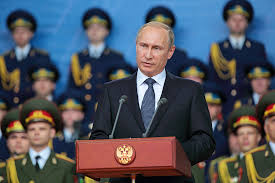
Russia’s plan to naturalize more foreign citizens seems to be working. In the first quarter of 2020, over 2.5 times more people received Russian citizenship compared to the same period in 2019.
In the first three months of the year, more than 161,000 people became Russian citizens. The same period in 2019 saw just 63,249. In recent years, an increasing number of people are receiving Russian citizenship, and new laws meant to attract more foreigners appear to be ramping up the growth even faster.

In 2019, almost 498,000 people received Russian citizenship, a sharp rise from 269,400 in the previous year. Speaking to daily newspaper RBC, Nikita Mkrtchyan, an associate professor at the HSE Institute for Demography, said that the figure for 2020 might break the record and exceed all previous years.
Recently, the Russian government has passed several bills to simplify the process for foreigners to receive citizenship. In April 2019, President Vladimir Putin simplified the procedure for citizens of the Donetsk People’s Republic (DNR) and the Lugansk People’s Republic (LNR), two unrecognized self-proclaimed states in Eastern Ukraine. In April, Putin signed a new law allowing citizens of all nations to become Russian citizens without giving up their existing passports. The 2020 bill also simplified the procedure for citizens of Ukraine, Kazakhstan, Belarus, and Moldova, who now no longer need the pre-requisite five-years of residency in Russia to become citizens.

In the last four years, there have been more new Russian citizens from Ukraine (46.6 percent) than anywhere else. The second largest group were Kazakhs (12.9 percent), followed by Tajiks (10 percent). In 2019, after the new laws for people from LNR and DNR, the percentage of Ukrainians among new Russian citizens rose to 60%.
Credit: RT
